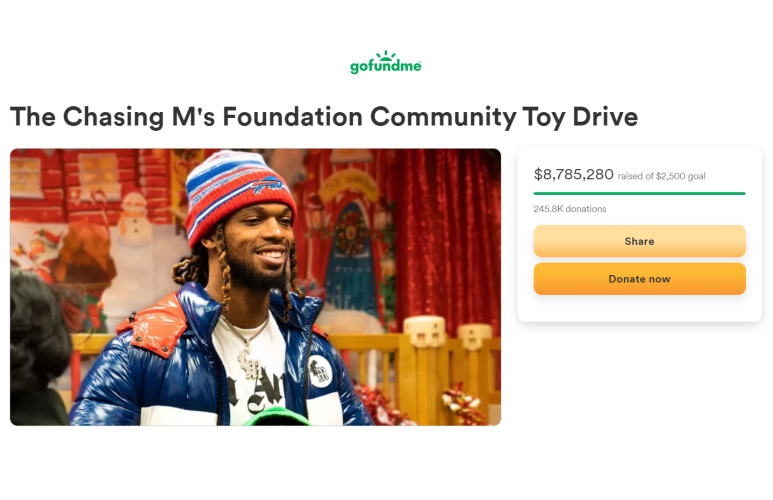The $8.6 million in donations received as of Wednesday by NFL player Damar Hamlin’s Chasing M’s foundation shows how unintentionally prophetic the “M” — which stood for millions — was when he named it in May 2020.
The “M” at the time was more aspirational than actual, much like Hamlin’s still nascent dream at the time of playing in the NFL.
But dreams sometimes do come true, and the outpouring of generosity following the cardiac arrest Hamlin suffered during a Jan. 2 game between his Buffalo Bills and the Cincinnati Bengals speaks profoundly to the role of philanthropy as a defining feature of American life.
It also provides a case study in how even the most well-meaning generosity can overwhelm a smaller nonprofit unaccustomed to receiving donations on such a grand scale.
Such reactive giving is more typically seen during the call to action following a natural disaster such as an earthquake or tsunami. But there are few parallels in a situation involving a single individual, said Patrick Rooney, a professor and executive associate dean at Indiana University’s Lilly Family School of Philanthropy.
“Here there really wasn’t a call to action per se, but many took it as an opportunity for action and wanted to show their support for him (Hamlin) in a tangible way even if they couldn’t do anything about his medical treatment,” Rooney said.
Such generosity can unintentionally prove too much of a good thing when there’s no mechanism in place to handle it, as evidenced by what Rooney called the “smart” decision by Hamlin’s family to temporarily outsource the foundation’s activities and fundraising to The Giving Back Fund in Los Angeles, California.
The Giving Back Fund, which has facilitated other large-scale philanthropic initiatives for athletes and celebrities, will administer the donations to Chasing M’s under the umbrella of a fully vested federal nonprofit while the foundation completes the process of forming a board of directors and acquiring its own federal nonprofit registration in addition to the state registration it currently holds in Pennsylvania.
Other nonprofits would do well to take heed and develop similar contingency plans, said Maureen McNally, chief growth officer for digital fundraiser MissionWired.
“We’ve found that sudden crises requiring rapid response can come at any time, for any type of organization or cause,” McNally said. “Because so often there’s no effective way to predict when your team will need to mobilize, we encourage every nonprofit we work with to have a rapid response plan in place.”
An object lesson in what can go wrong when an organization lacks the infrastructure to handle a large amount of donations was the more than $90 million taken in by the Black Lives Matter Global Foundation following the racial justice protests that swept the country in 2020. Much of the money was later allegedly misspent or unaccounted for, culminating in negative headlines and lawsuits by multiple state attorneys-general.
“Sometimes when too much money comes in too quickly like that can, there’s a risk you may not have the oversight control you need and it can disrupt an organization,” said Rooney. “It’s inevitable there will be some bad apples in the mix of things, which is why you need those checks and balances. But the giving we see in these situations does reflect how philanthropy is a core American value.”
